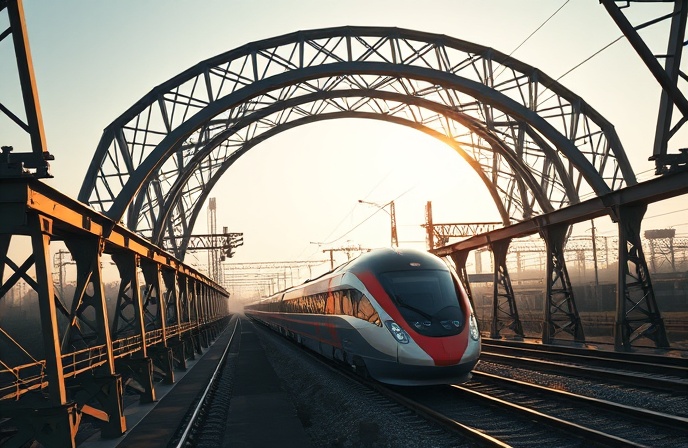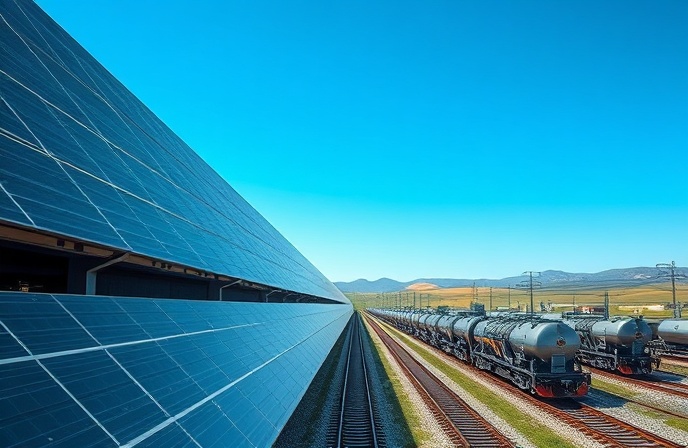Wabtec, Siemens Power India’s Rail Revolution

Introduction
This article delves into the significant collaboration between Wabtec Corporation, Siemens Mobility, and Indian Railways, focusing on the supply of Wabtec’s advanced brake systems for a new fleet of 1,200 next-generation locomotives. This partnership underscores a growing trend towards technological advancements in the Indian railway sector, driven by a need for increased efficiency, safety, and environmental sustainability. The $157 million order, part of a larger $3.2 billion contract between Siemens and Indian Railways, represents one of the largest single locomotive orders in history, highlighting the scale of infrastructure development underway. This article will explore the technical specifications of the locomotives, the strategic importance of this collaboration, the role of “Make in India” initiatives, and the broader implications for the modernization of the Indian railway network. We will examine the key features of Wabtec’s brake system, its contribution to enhancing safety and operational efficiency, and the long-term strategic partnerships fostering innovation within the Indian rail industry.
Wabtec’s Brake System and its Technological Significance
Wabtec Corporation’s contribution to this project centers on its ILS series braking system, a crucial component ensuring the safety and efficiency of the 9,000 horsepower (HP) electric locomotives. This “Made in India” system, designed and developed by Wabtec’s Indian engineering team, showcases the company’s commitment to local manufacturing and technological advancements. The system’s design incorporates cutting-edge technology intended to optimize braking performance, reducing wear and tear on components, and contributing to enhanced fuel efficiency. This is critical for the 4,500-tonne carrying capacity of these high-powered locomotives, capable of speeds up to 120 km/h. The reliability and performance of the braking system are paramount for the safe and efficient operation of such powerful locomotives across the expansive Indian rail network. The adoption of this advanced technology signifies a departure from older braking technologies and a commitment to improved safety standards for India’s railways.
Siemens’ Role and the Broader Context of Indian Railway Modernization
Siemens’ $3.2 billion contract with Indian Railways, of which the Wabtec order forms a part, marks a significant milestone in the modernization of the Indian rail network. This massive undertaking, spanning eleven years, underscores the Indian government’s commitment to infrastructure development and the improvement of its railway system. The project contributes significantly to the country’s economic growth by creating jobs and improving transportation infrastructure. The procurement of high-performance locomotives demonstrates a focus on improving efficiency and reducing transit times for both passengers and freight. The partnership between Siemens and Wabtec exemplifies a collaborative approach, utilizing international expertise while fostering local manufacturing capabilities. This approach supports the “Make in India” initiative, promoting local manufacturing and boosting domestic technological capabilities. The focus on electric locomotives also aligns with India’s commitment towards environmental sustainability and reducing reliance on fossil fuels.
“Make in India” and Local Manufacturing Capabilities
The emphasis on “Make in India” is central to this collaboration. The local assembly of Wabtec’s brake systems at its Hosur plant, alongside the construction of the locomotives themselves at the Indian Railways factory in Dahod, Gujarat, significantly boosts local manufacturing and job creation within India. This strategy reduces reliance on foreign suppliers, fostering the growth of domestic expertise and technological self-reliance. The development and production of the ILS braking system in India demonstrates the ability of Indian engineers to handle complex, safety-critical systems. This showcases India’s growing expertise in the railway technology sector and positions the country as a key player in global railway manufacturing. This approach supports India’s economic growth, reduces dependence on imports, and strengthens the nation’s position in the global railway market.
Conclusion
The partnership between Wabtec, Siemens, and Indian Railways represents a significant step towards modernizing India’s rail infrastructure. The supply of Wabtec’s advanced braking systems for the new fleet of 9,000 HP electric locomotives highlights the importance of technological innovation and safety in large-scale railway projects. The “Made in India” aspect of the brake system production underscores the success of the government’s initiatives to promote local manufacturing and technological development. The sheer scale of the project, with its 11-year timeframe and the procurement of some of the world’s most powerful locomotives, speaks volumes about the commitment to upgrading and expanding India’s railway network. This upgrade will lead to increased efficiency, enhanced safety features, and a reduction in transit times, ultimately contributing to India’s economic growth and development. The successful collaboration between international companies and domestic expertise sets a precedent for future projects, demonstrating the potential for India to become a leader in railway technology and manufacturing. The long-term implications extend beyond the immediate impact of this particular order, signifying a broader trend towards technological advancement and modernization within the Indian Railways system, driven by both domestic initiatives and strategic international partnerships. The success of this project will serve as a benchmark for future investments in sustainable and efficient rail transportation in India and potentially other emerging markets globally.





